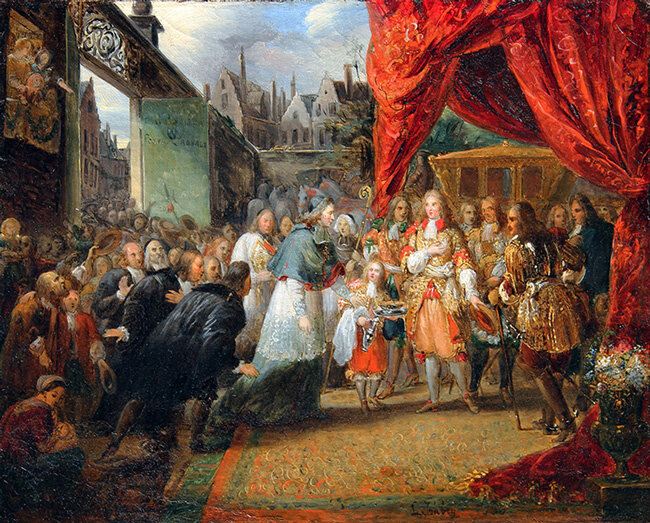LOUIS GABRIEL EUGÈNE ISABEY PAINTINGS FOR SALE & BIOGRAPHY
LOUIS GABRIEL EUGÈNE ISABEY
French, 1803–1886
BIOGRAPHY
“Louis Gabriel Eugène Isabey was the son and pupil of the miniaturist Jean Baptiste Isabey and was among the most admired minor masters of the 1830 school. He very quickly detached himself from the classical ideals of his father in order to follow the Romantic movement, where he came very much under the influence of Delacroix (1798–1863) and Bonington (1802–1828).
He made his debut at the Salon in 1824 with seascapes and landscapes, obtaining a first-class medal. In 1827, Isabey exhibited views of Normandy, one of which belonged to the duchess of Berry. He was awarded a first-class medal once again, though the influence of his father was partly responsible for this brilliant success. He made yet another appearance at the Salon of 1831 with genre paintings and scenes of Normandy. He was made a Chevalier of the Légion d'Honneur in 1832, and on 21 January 1852 he was awarded the Croix d'Officier. Finally, he received first prize at the Exposition Universelle of 1855. Isabey continued to take part in the Paris exhibitions until 1878.
In 1830, he was appointed draughtsman for the Algiers expedition, and Isabey senior later presented Charles X with a drawing by his son representing the Toulon Harbour on the Eve of the Departure of the Fleet, which, according to the newspapers of the day, the Dauphin was pleased to accept. Even so, this trip to Algeria did not have a strong influence on his work. Many of Isabey’s paintings date from the thirties, especially paintings of interiors with a very subtle delicate greyish tint. The colors of his most important works found their inspiration in Rubens: Battle of Texel (exhibited at the Salon in 1839), Taking on Board the Body of Napoleon I (1842), Ceremony in a Church in Delft (1847), and Embarkation of Ruyter and William de Witt. Towards the end of his career, he produced many watercolors, some of which can be said to signal the beginnings of Impressionism. He was also the master of Boudin (1824–1898) and Jongkind (1819–1891). In 1997, the graphic-arts section of the Louvre acquired a collection of sketchbooks, some of which evoke the artist's sojourns in Normandy and Brittany between 1843 and 1855, or in London between 1870 and 1871. They demonstrate the rapidity and ease with which he created his works, and also his imagination” (Benezit, Dictionary of Artists, Gründ, 2006).
Museum Collections:
Art Institute of Chicago, Chicago, IL
Ashmolean Museum, Oxford
Hermitage Museum, St. Petersburg
J. Paul Getty Museum, Los Angeles, CA
Metropolitan Museum of Art, New York, NY
Musée d’Orsay, Paris
Musée des Augustins, Toulouse
Museum of Fine Arts, Boston, MA
National Gallery, London
National Gallery of Art, Washington, D.C.
National Maritime Museum, Greenwich
Philadelphia Museum of Art, Philadelphia, PA
Smithsonian American Art Museum, Washington, D.C.
St. Louis Art Museum, St. Louis, MO
The Walters Museum, Baltimore, MD
Mark Murray Fine Paintings is a New York gallery specializing in buying and selling 19th century and early 20th century artwork.
LOUIS GABRIEL EUGÈNE ISABEY
Paintings for sale
Currently there are no available Louis Gabriel Eugène Isabey paintings for sale at the Mark Murray Gallery.
Please contact us if you are interested in selling your Louis Gabriel Eugène Isabey paintings or other artwork from the 19th century and early 20th century.
Louis Gabriel Eugène Isabey Paintings Previously Sold
LOUIS GABRIEL EUGÈNE ISABEY
Return to his Tutor: The Grandson of Louis XIV makes a State Visit to Archbishop Fenelon at Cambrai, April 26, 1702
Oil on canvas
13¼ x 16¼ (33.3 x 41.3 cm)
ACQUIRED BY THE MUSÉE DU LOUVRE


